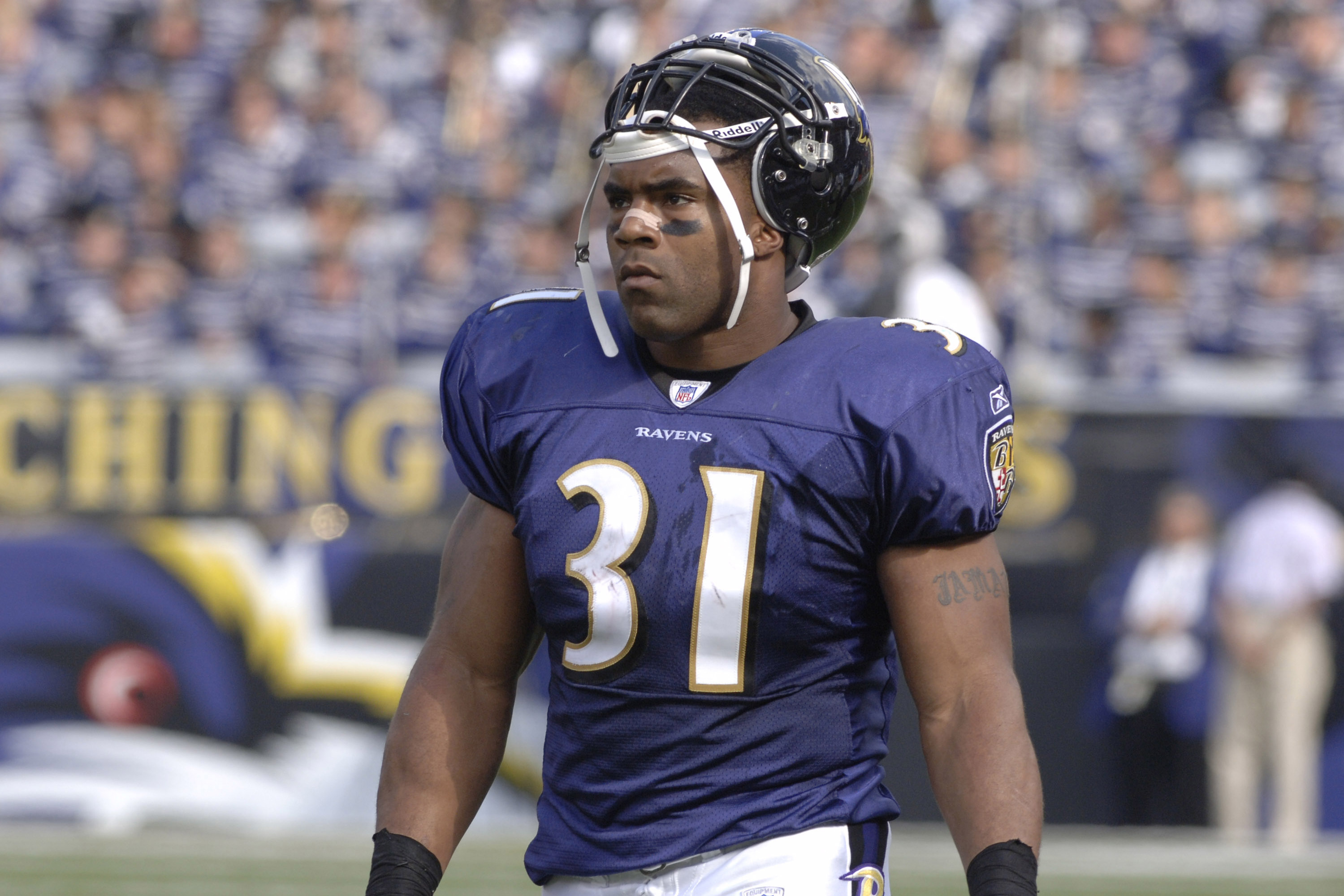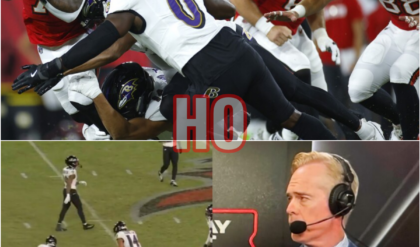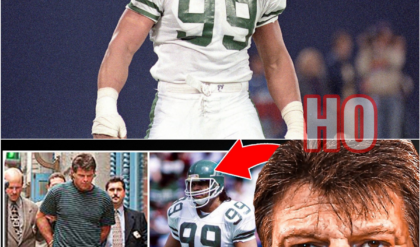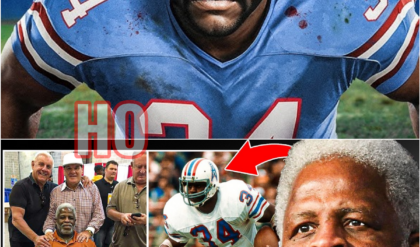The Downfall of Jamal Lewis, How he Lives After Going Bankrupt is Tragic… | HO
Jamal Lewis achieved incredible records, but his involvement in drug dealing and financial struggles overshadowed his success, leaving him in a dire state!

Jamal Lewis, once an NFL superstar, experienced a spectacular rise and fall in both his professional career and personal life. Known for his incredible rushing ability, Lewis reached heights few running backs have achieved, but his off-field struggles led to a tragic downfall. Despite his legendary status in football, Lewis’s post-career life has been marred by legal issues, financial trouble, and health complications.
Jamal Lewis was drafted fifth overall by the Baltimore Ravens in the 2000 NFL Draft. From the outset, he proved to be an unstoppable force. As a rookie, Lewis played a pivotal role in the Ravens’ run to a Super Bowl XXXV victory. His power, speed, and durability made him a nightmare for defenses, and he quickly established himself as one of the league’s elite running backs.
In 2003, Lewis cemented his place in the NFL history books by rushing for 2,066 yards in a single season, becoming just the fifth running back to break the 2,000-yard barrier. This achievement included a record-breaking 295-yard game against the Cleveland Browns, which at the time was the highest single-game rushing total in NFL history. He earned numerous accolades that year, including the NFL Offensive Player of the Year award and Pro Bowl honors.
However, as Lewis’s football career reached new heights, his personal life began to unravel. In February 2004, just months after his historic season, Lewis was indicted on federal charges related to drug dealing. Prosecutors alleged that Lewis had conspired to facilitate a cocaine deal by introducing a friend to a drug dealer. Although Lewis denied being directly involved in the sale of drugs, he eventually reached a plea deal, admitting to using a cell phone to discuss a drug transaction.
In October 2004, Lewis was sentenced to four months in federal prison, followed by two months of house arrest. The conviction tarnished his image, and though he returned to the NFL after serving his sentence, his off-field issues overshadowed his on-field performances.
After his release from prison, Lewis continued to play in the NFL, but his career never fully recovered. In 2006, he re-signed with the Ravens, but by 2007, his time in Baltimore had come to an end, and he joined the Cleveland Browns. Although he had a solid season with the Browns, rushing for over 1,300 yards in 2007, injuries and declining performance began to take their toll. By 2009, Lewis’s playing days were numbered, and he retired from the NFL after that season.
Unfortunately, retirement did not bring peace for Lewis. In 2010, just a year after leaving the game, Lewis filed for bankruptcy in Georgia. Court documents revealed that despite having earned millions of dollars during his career, Lewis had accumulated more than $10.6 million in debt. His assets, worth $14.5 million, were not enough to cover his liabilities, which included unpaid loans, back taxes, and alimony payments.
Among the most notable debts was a $350,000 judgment against him for defaulting on a loan from a bank that sponsored the Ravens’ stadium. Additionally, in 2011, Regions Bank sued Lewis for failing to repay a $660,000 loan. These financial woes, combined with the sale of his Super Bowl XXXV championship ring, painted a picture of a man who had lost nearly everything.

In addition to his legal and financial difficulties, Lewis has also dealt with significant health problems. Like many former NFL players, he has struggled with the long-term effects of concussions and other injuries sustained during his playing career. Lewis has spoken about the physical toll that football took on his body, including chronic pain and cognitive issues. These health struggles have made it difficult for him to transition to life after football.
Despite these challenges, Lewis has tried to rebuild his life. In 2015, he became the Vice President of Business Development at Metro Exhibits, a company specializing in trade show exhibits. He later became President of Southeast Exhibits and Metro Retail Solutions, indicating his effort to move on from football and create a stable life for himself outside of the game.
However, even with a new career, Lewis has faced significant setbacks. The bankruptcy and sale of his Super Bowl ring were emblematic of the financial difficulties that have plagued him since his playing days ended. His health issues have only compounded these struggles, making it clear that the transition from NFL star to regular life has not been smooth.
The story of Jamal Lewis is, unfortunately, not uncommon among former professional athletes. Many players find themselves unprepared for life after sports, facing financial mismanagement, legal troubles, and health issues that can derail their lives. For Lewis, the combination of these factors has led to a tragic downfall.
Despite his incredible achievements on the field—Super Bowl champion, 2,000-yard rusher, and Pro Bowl star—Lewis’s legacy has been overshadowed by his personal troubles. His involvement in a drug conspiracy, the financial collapse that left him bankrupt, and the health challenges he continues to face have all contributed to a narrative of unfulfilled potential and hardship.
Lewis’s story serves as a cautionary tale for current and future athletes. While success on the field can bring fame and fortune, it does not guarantee long-term stability. Without careful financial management, planning for life after sports, and attention to health and well-being, even the most successful athletes can find themselves struggling once their playing days are over.
In the years since his retirement, Lewis has worked to rebuild his life, focusing on his business ventures and addressing his health issues. While his journey has been filled with setbacks, his resilience in the face of adversity is a testament to his determination. However, the challenges he has faced serve as a reminder of the difficulties many athletes encounter after leaving the sport that once defined their lives.
Jamal Lewis’s story is a tragic one, highlighting the pitfalls that can come with fame and fortune in the world of professional sports. His rise to football greatness was meteoric, but his fall has been equally dramatic. As he continues to navigate life after football, Lewis’s experience offers important lessons about the importance of financial literacy, health care, and planning for the future—lessons that all athletes should heed as they prepare for life after the game.





